A 24-mile-long sandbar with an alluvial core, the North-Frisian island of Sylt is famed for being the most expensive place to buy a house in Germany—hence its reputation as the Teutonic equivalent of the Hamptons. It was therefore only natural that the Lanserhof Group of luxury hotel-clinics, which started in Austria, should seek to capture a larger share of the German health-tourism market by opening a complex on the island. Now counting four principal addresses, Lanserhof offers a weeklong cure based on the abstemious dietary recommendations of Dr. Franz Xaver Mayr (1875–1965) as well as a battery of health checks, treatments, and fitness regimes. For its first seaside development, the group called on ingenhoven associates, a Düsseldorf-based firm that, in 2014, completed Lanserhof’s Tegernsee hotel-clinic in Bavaria, and also renovated and extended the original complex at Lans in the Austrian Tyrol (2017), as well as fitting out its UK outpost at the Arts Club in London’s Mayfair district (2019).
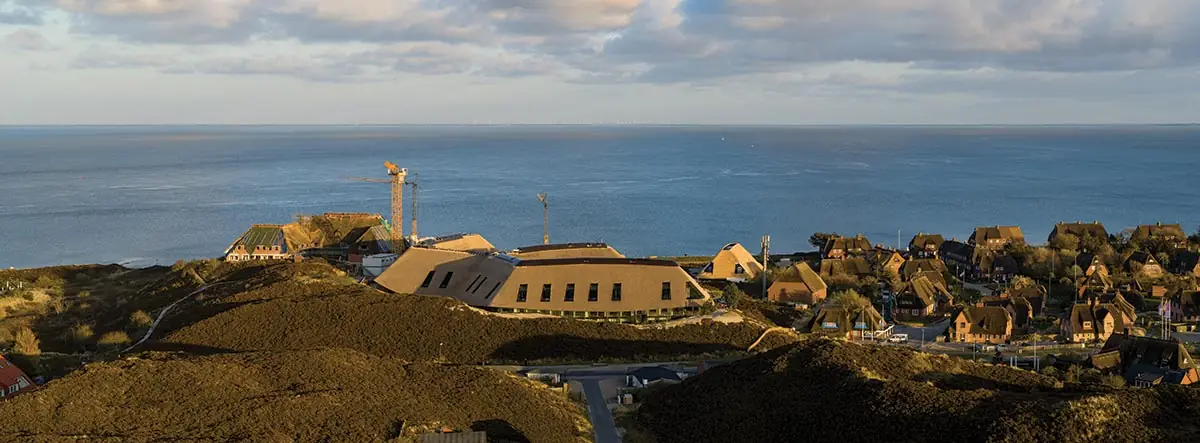
The seaside site (above) and the island’s local thatch industry influenced the design of Lanserhof Sylt’s main building (top of page). Photo © HG Esch, click to enlarge.
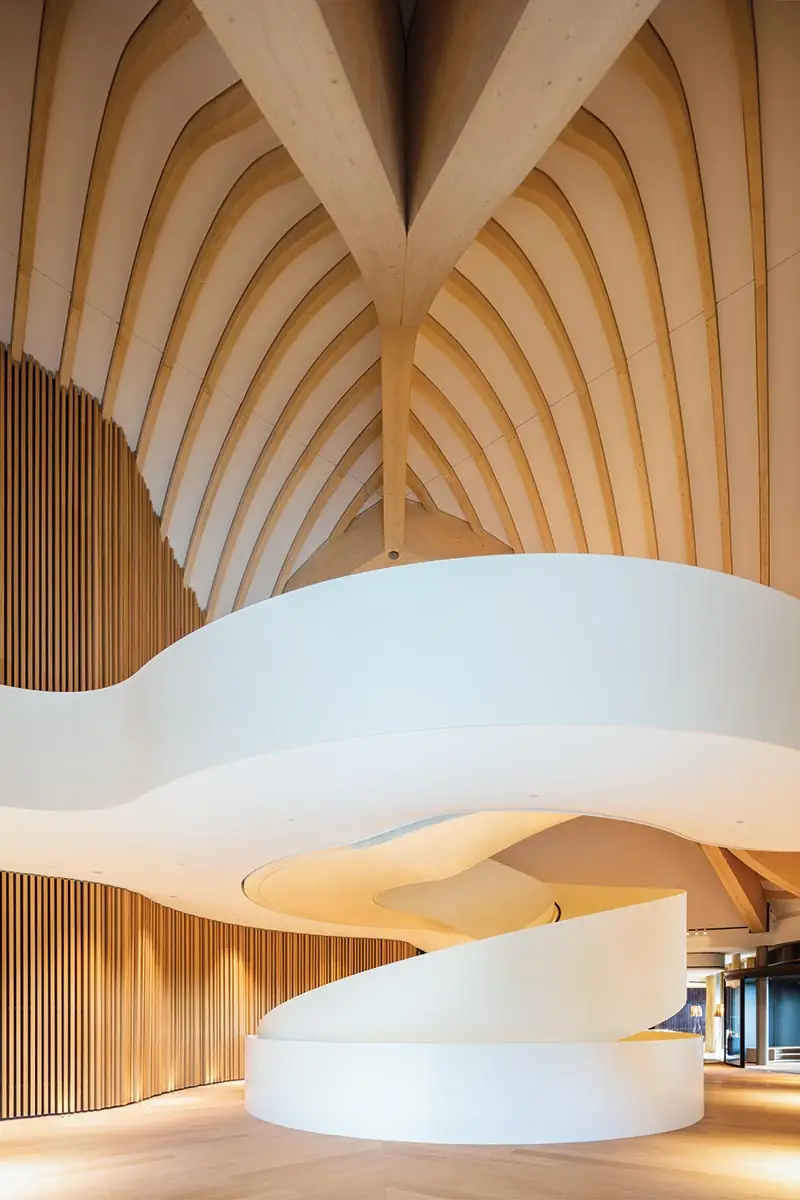
Photo © HG Esch
“Lanserhof has a penchant for quiet, remote locations in regions with a certain cachet,” says Christoph Ingenhoven, founder of the eponymous firm. On Sylt, the group acquired a 13-acre former military base on dunes at the northern tip of the island. “The facility was built by the Nazis in 1934,” he continues. “There were five buildings on the base, one of which, the officers’ mess, we were obliged to keep and restore. We could demolish the others, but had to rebuild within their footprint and volume, except for the main resort building, where we were able to negotiate something bigger.” The authorities also allowed construction of one extra structure on a virgin site, but forbade modification of the dunes beyond a 6½-foot perimeter around each building.
“Our brief was ‘Do the same as at Tegernsee, only better,’ ” laughs Ingenhoven. Like its Bavarian cousin, the 183,000-square-foot main building at Lanserhof Sylt, which opened last August, features 70 bedrooms of varying categories, as well as two entire floors of treatment rooms, a spa, two saltwater swimming pools (one indoor, the other outdoor), and lobby, lounge, dining, and conference areas. On completion in 2024, a second, 38,000-square-foot structure will augment the resort’s offerings: located by the shore, and linked to the main building by a deep concrete tunnel, it will contain more bedrooms, a dental practice, and an MRI scanner. The group plans to sell off the other four buildings in the $237 million development as private residences.
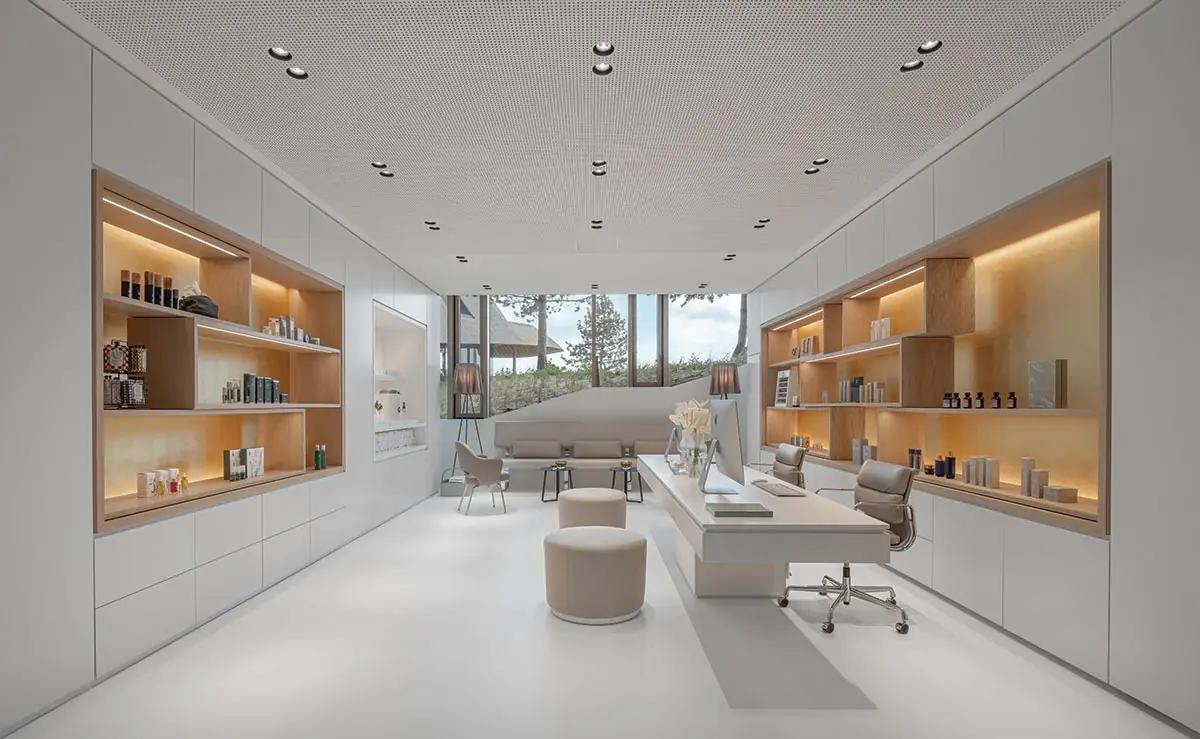
1
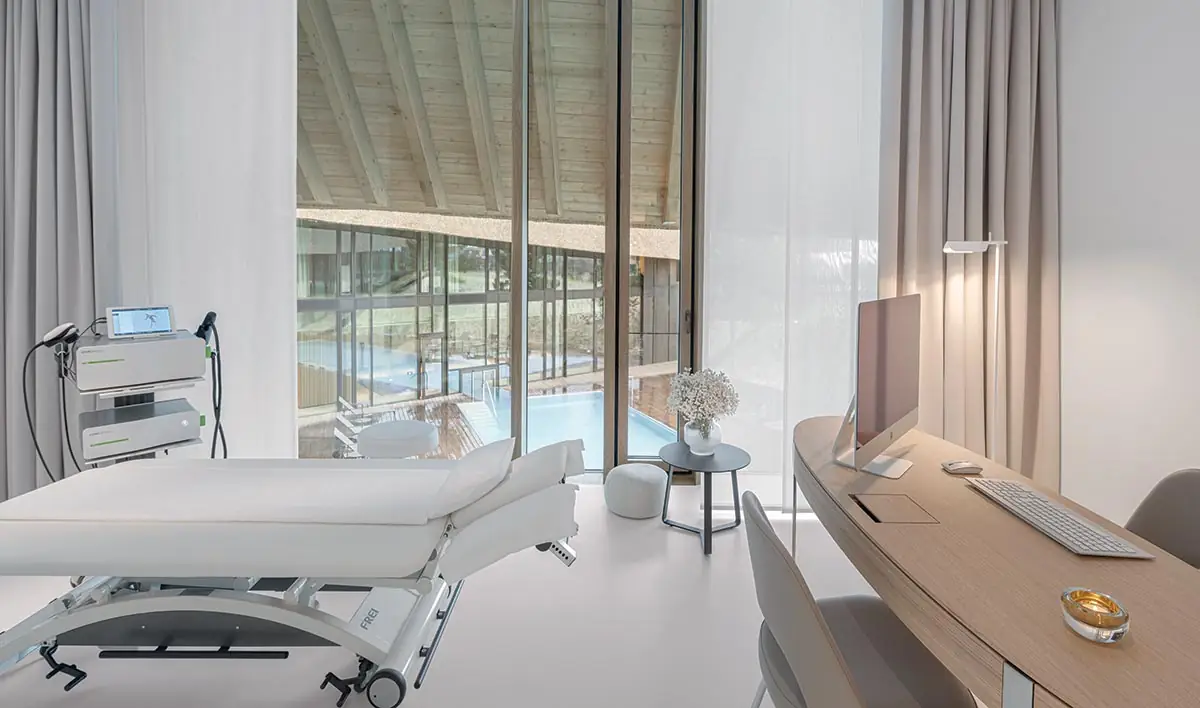
2
Health-related facilities include treatment and medical rooms (1 & 2), a spa, and two pools, one outdoors (3). Photos © Alexander Haiden (1 & 2), HG Esch (3)
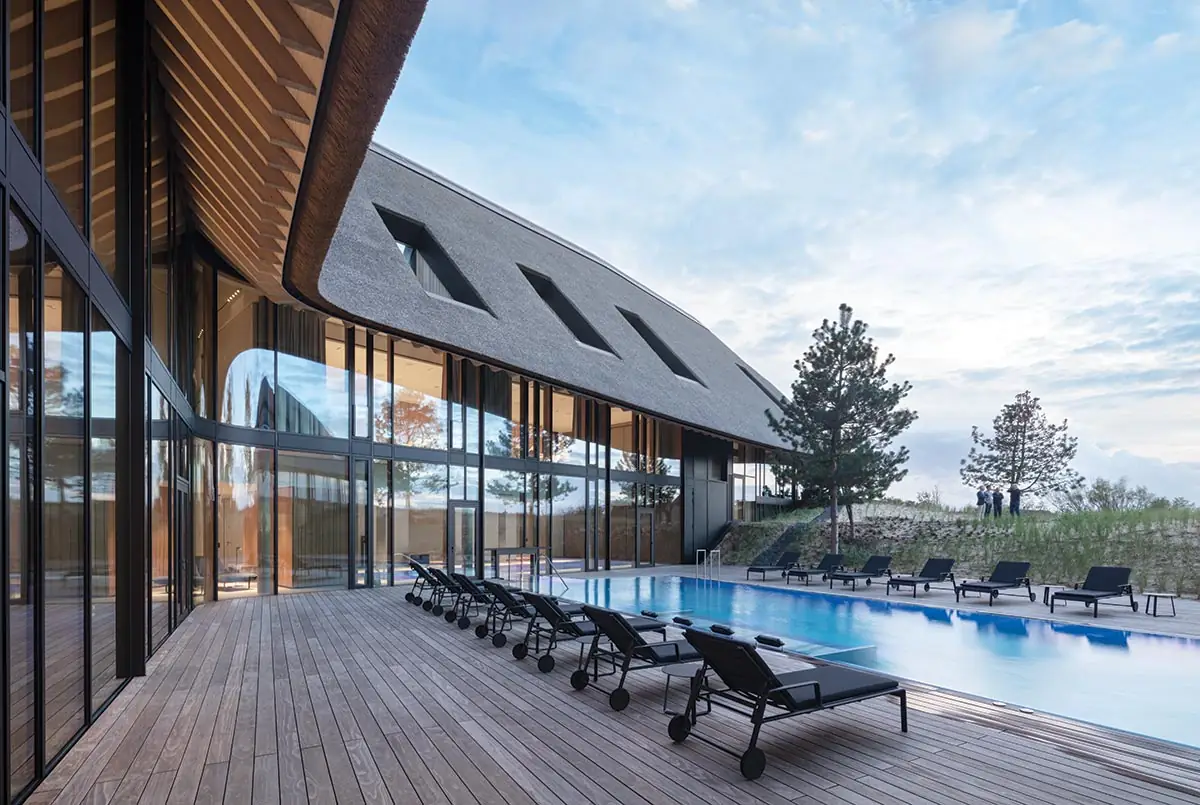
3
“Lanserhof likes to be very generous with space,” continues Ingenhoven, “something you really need on the more extreme fasting cures, since you become extremely irritable.” Three further considerations shaped the main building’s morphology: first, the desire to ensure sun and sea exposure for as many rooms as possible; second, the heritage stipulation that it should rise no higher than the officers’ mess; third, Ingenhoven’s decision to roof it in thatch, a material for which Sylt is famous. (In an interesting reversal of historic tradition, thatched houses are now built for the rich and with roof tiles for the “poor”). The fact that thatch performs best on a 42-degree slope was therefore a determining design factor.
Backed into the dune, the E-shaped building plan comprises three irregular wings that meet at a sculptural linchpin stair. In keeping with the billowing landscape, right angles are largely eschewed, each wing bulging rather amorphously in the middle. “This allowed us to increase facade length,” explains Moritz Krogmann, lead architect on the project, “and ensure we met the program’s daylight requirements. It also caused the roofs to take on a more dunelike form, since they’re forced to swell upward at the center.” Structurally, the building is a hybrid, with concrete for the first three levels, and mass timber for the giant roof frame above.
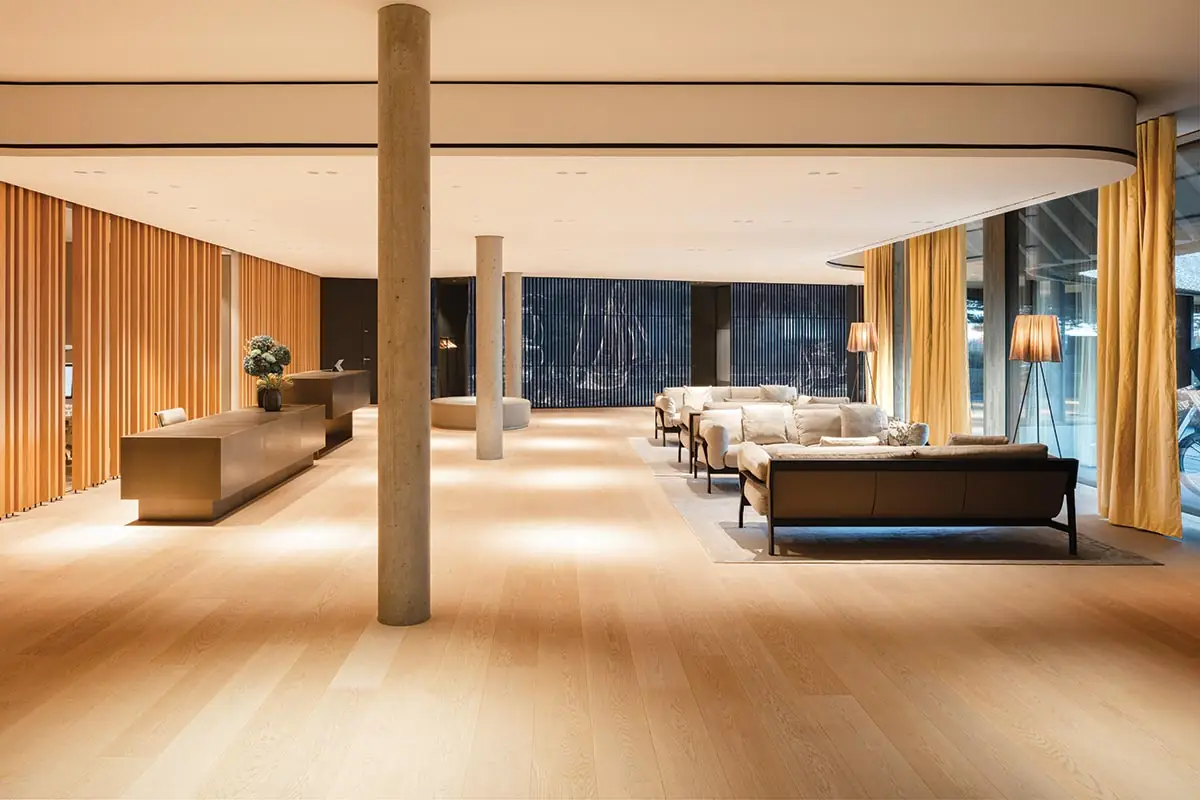
The ground floor provides gracious public spaces. Photo © HG Esch
Arriving from the island’s airport by car, most visitors will barely glimpse the monumental mound of thatch (sourced in Kazakhstan, because Germany could not meet demand) that covers the complex before they are swallowed up in the cavernous garage. There, out of sight of prying eyes, Lanserhof’s wealthy and often celebrity clients are greeted at an underground reception desk. Over their heads, the semi-basement contains the spa, pools, fitness facilities, and treatment rooms, while the principal public spaces and the remainder of the medical rooms are located on the ground floor. Above the fire break formed by this level’s concrete ceiling, bedroom floors rise into the hull-like attic. Squeezing them in was akin to solving a giant Jenga puzzle, with pairs of double-bed duplexes meeting each other above one-level single rooms. All enjoy some sort of outdoor space, mostly in the form of deep loggias cut sharply into the roof.
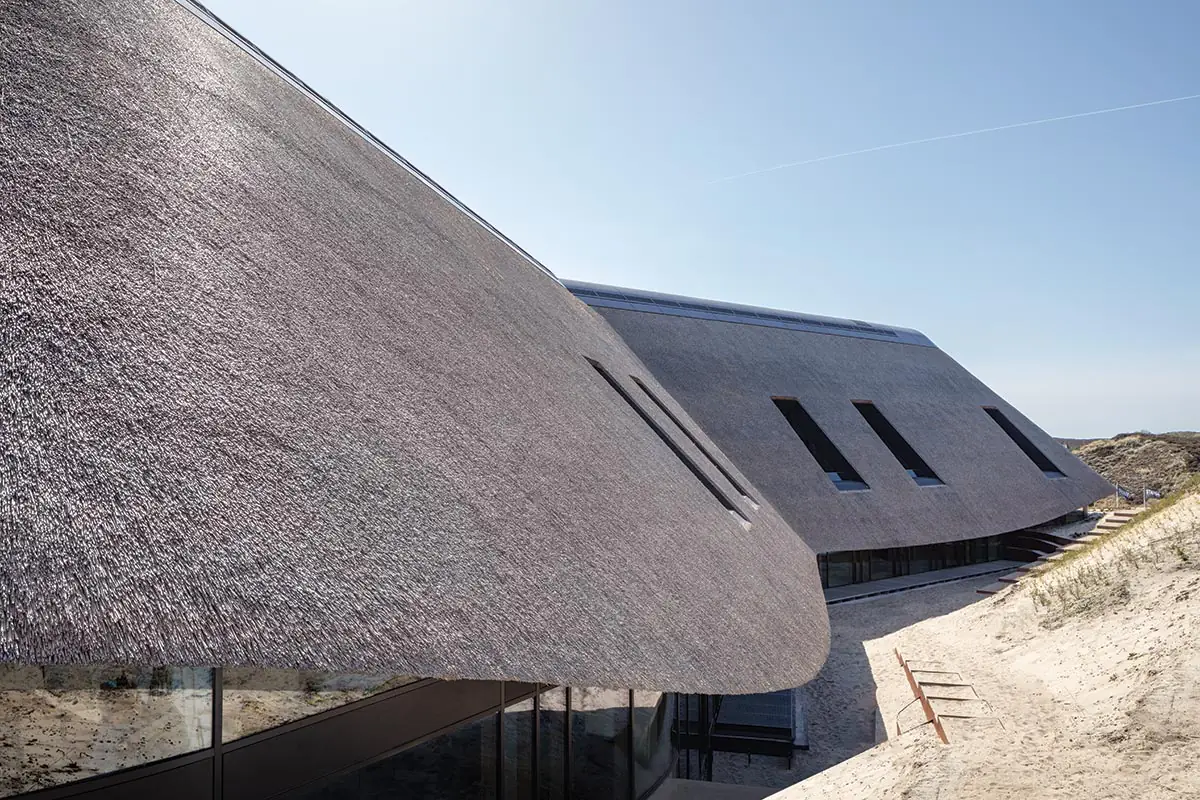
4
The undulating roof (4) accommodates deep loggia-like terraces on upper levels (5 & 6). Photos © HG Esch (4 & 6)
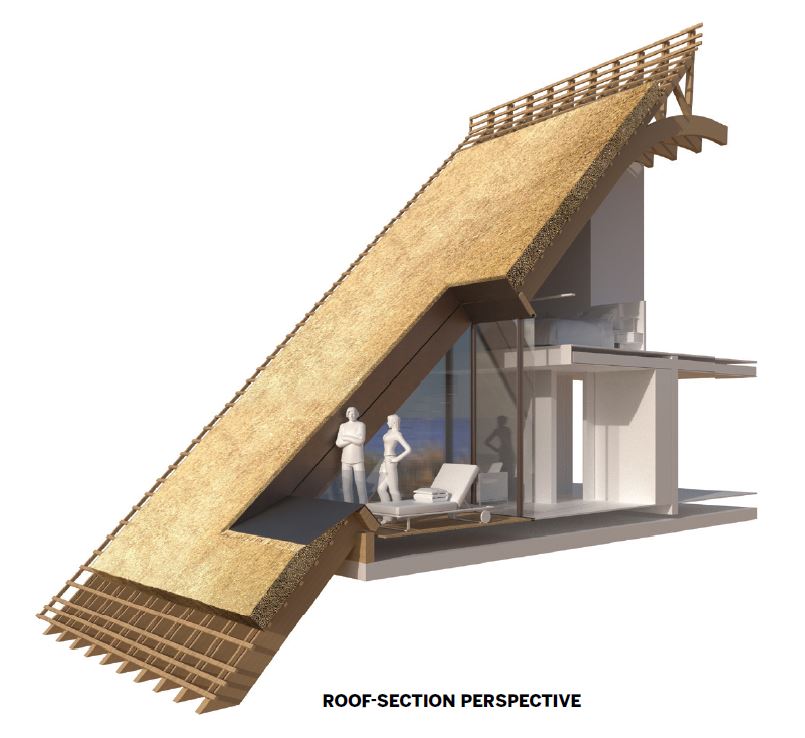
5
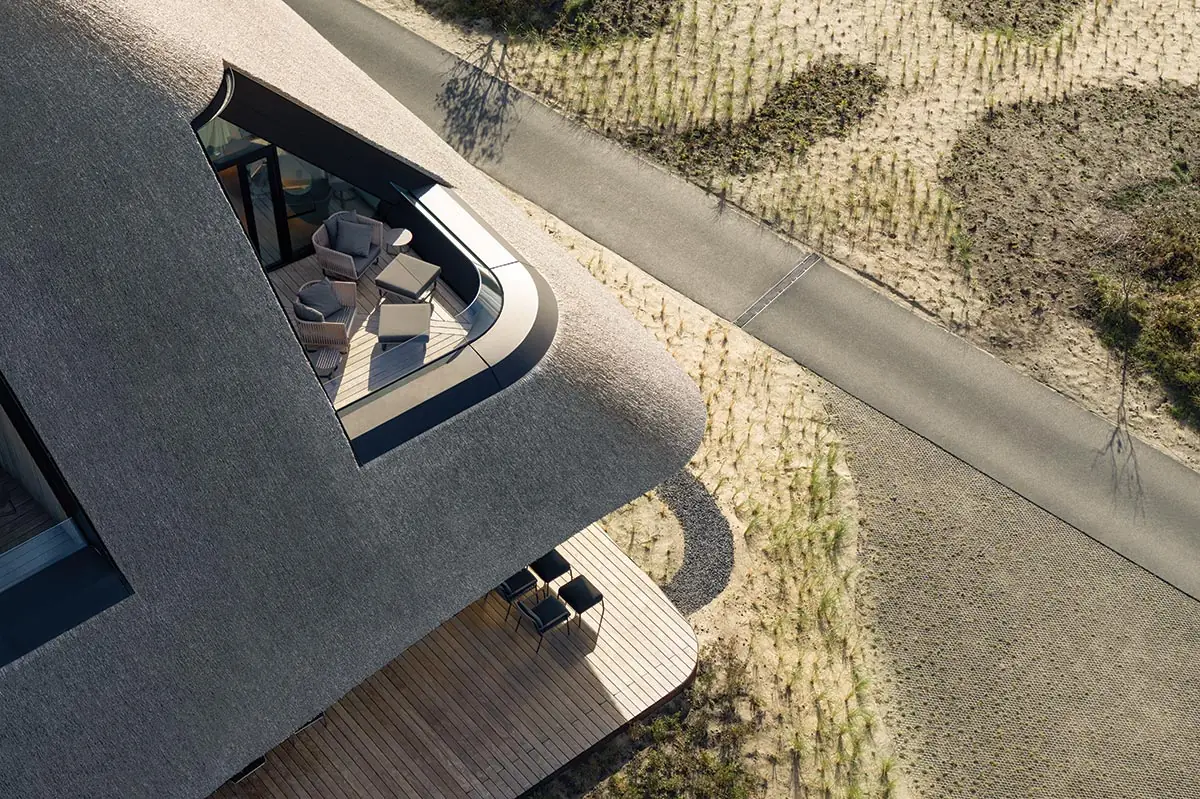
6
Beneath the undulating grass skirt formed by the projecting eaves, all-glass elevations allow a direct relationship between the public spaces and the landscape, the oak frames of their curtain walls clad in aluminum to protect against the often horizontal rain. While the hotel interiors sport a play-it-safe palette of international greige (oak flooring and wall slats, exposed CLT and glulam, dashes of raw concrete), the medical suites reassure or fatigue, depending on your point of view, in a blizzard of clinical white. If you can ignore the clunkier fittings and detailing, the general ambience achieves the desired calme and luxe, though not quite the volupté, helped along by furnishings that Ingenhoven designed, chose, or customized, all in an inoffensive Scandinavian style.
If you undertake one of the lighter Lanserhof cures, life on Sylt is very pleasant, and the highly skilled medical and fitness staff will soon fill up your days. But something seems wrongheaded about the way the complex was planned. To build it, a whopping 2.1 million cubic feet of sand was moved; to keep it dry, pumps must operate 24 hours a day. If the stairs are vertiginously steep in the duplex rooms (there have been falls), it’s because the main building was largely designed from the outside in, external factors having determined an envelope into which accommodation had to be shoehorned. Most of these quirks and profligacies stem from the original programming sin: squeezing too big a floor area into too small a footprint. Today it seems obvious that, split among the six structures on the site, the hotel-clinic would tread far more lightly on the terrain. But 10 years ago, when the operation was programmed, few clients or architects were thinking that way.
Click plan to enlarge
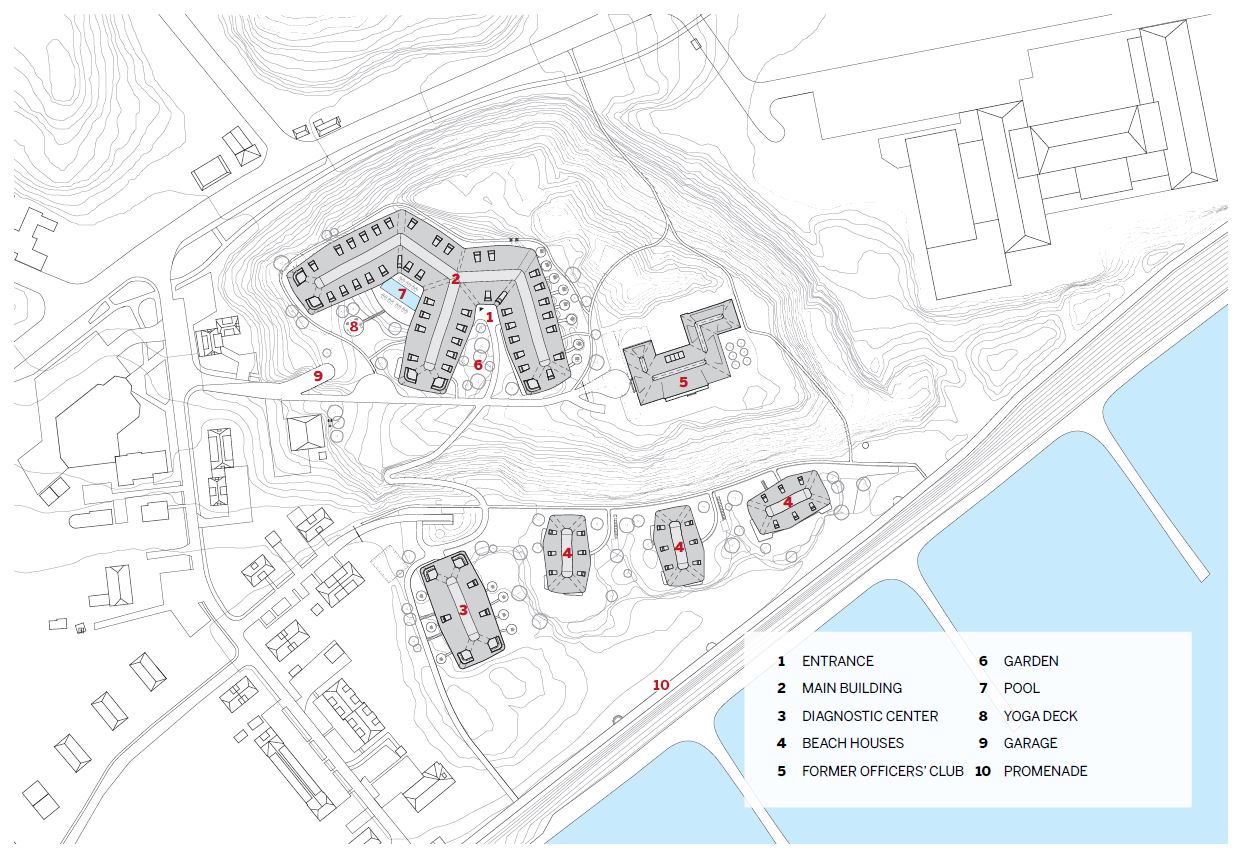
Credits
Architect:
ingenhoven associates – Christoph Ingenhoven, Moritz Krogmann, Annette Büsing, Andreas Crynen, KarMin Shim, Juan Pereg, Mina Rostamiyanmoghadam, Ian Chow, Martin Trawinski, Philipp Neumann, Florian Jung, Kiara Helk, design team
Engineers:
Werner Sobek (structural/facade); Drees & Sommer (building services/building physics)
Consultants:
Enea, TGP (landscape architecture); Tropp (lighting design); BPK Fire Safety Consultants (fp)
Contractors:
Höft Bau Sylt (shell); Schütt (timber roof structure); Sehlmann (curtain wall), Heinrich Würfel (facade); TKS (interior); Baierl Demmelhuber (drywall); ETS (building services), Elin (electric); Stage LED (lighting)
Owner:
Lanserhof Group
Size:
175,500 square feet
Cost:
Withheld
Completion Date:
August 2022
Sources
Curtain Wall:
Raico
Roof:
Tekhek
Windows:
Warema (metal frame)
Woodwork:
Winkels
Lighting:
Flos (ambient); XAL (downlights)
Furnishings:
Vitra, Paola Lenti (chairs); Manutti (tables); Kettal (outdoor)
Plumbing:
Dornbracht



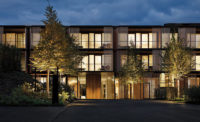
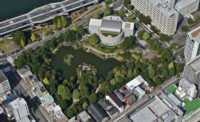
Post a comment to this article
Report Abusive Comment